Price-Point Comparing Three-Way Case Shootout
by Joshua Buss on January 13, 2006 12:05 AM EST- Posted in
- Cases/Cooling/PSUs
Raidmax X1 (cont’d)
Turning the case more, we can see the relationship of the three main elements of the active cooling in the X1: the rear 120mm, the side-mounted 80mm, and the potential power supply fan(s).
Like the P150, the X1 too has additional passive vents near the expansion slots. It’s also easier to tell now that at least in terms of 3½” drive bays, the X1 and P150 also basically tied, as they can both house 1 external and 4 internal drives. The X1’s drive bays are all tool-less, and we’ll explain the usage of the black units visible in the previous two pictures shortly. Before opening up the case though, let’s turn the case around and have a look at the bottom as well.
While certainly not as nicely-finished as the underside of the P150, the X1 still does have feet, but they’re not going to do anything for the absorption of vibrations. More intake ventilation can be found here under the front bezel, and there is a space for an additional 80mm to be mounted in order to actively bring in cool air right onto the hard drives visible here on the right side panel.
Taking off the left side and peering into the chassis reveals a spacious interior delightfully void of any additional crossbars that could make installation difficult. Granted, bars like this are actually preferred by people more concerned with case stability and longevity, but in testing and handling, we still didn't get the impression that the X1 felt wobbly or weak by any means. One very minor strike against the X1, though, is that it doesn't support quite as many form factors as the P150, as one can tell by looking at the available holes for motherboard stand-offs, but the standard ATX sizes won't be any problem.
Notice again how every bay incorporates the usage of tool-less locks. While it might be pretty obvious from the picture, it is still worthy of mention that the locks are all the same and are also equally simple to use. They simply push in and slide to both lock and unlock. In the following close-up, the pin that actually holds the drive into place is pretty visible, and in testing, these did a good job of holding the drives very securely.
Turning the case more, we can see the relationship of the three main elements of the active cooling in the X1: the rear 120mm, the side-mounted 80mm, and the potential power supply fan(s).
Like the P150, the X1 too has additional passive vents near the expansion slots. It’s also easier to tell now that at least in terms of 3½” drive bays, the X1 and P150 also basically tied, as they can both house 1 external and 4 internal drives. The X1’s drive bays are all tool-less, and we’ll explain the usage of the black units visible in the previous two pictures shortly. Before opening up the case though, let’s turn the case around and have a look at the bottom as well.
While certainly not as nicely-finished as the underside of the P150, the X1 still does have feet, but they’re not going to do anything for the absorption of vibrations. More intake ventilation can be found here under the front bezel, and there is a space for an additional 80mm to be mounted in order to actively bring in cool air right onto the hard drives visible here on the right side panel.
Taking off the left side and peering into the chassis reveals a spacious interior delightfully void of any additional crossbars that could make installation difficult. Granted, bars like this are actually preferred by people more concerned with case stability and longevity, but in testing and handling, we still didn't get the impression that the X1 felt wobbly or weak by any means. One very minor strike against the X1, though, is that it doesn't support quite as many form factors as the P150, as one can tell by looking at the available holes for motherboard stand-offs, but the standard ATX sizes won't be any problem.
Notice again how every bay incorporates the usage of tool-less locks. While it might be pretty obvious from the picture, it is still worthy of mention that the locks are all the same and are also equally simple to use. They simply push in and slide to both lock and unlock. In the following close-up, the pin that actually holds the drive into place is pretty visible, and in testing, these did a good job of holding the drives very securely.
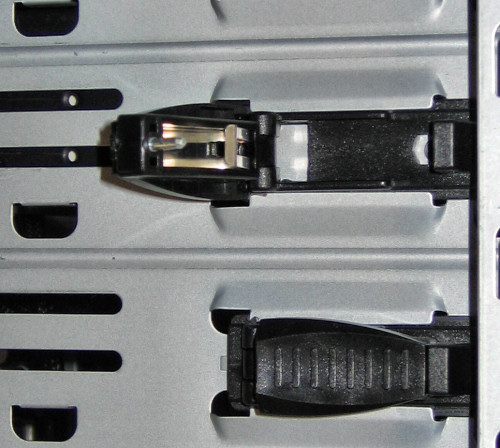


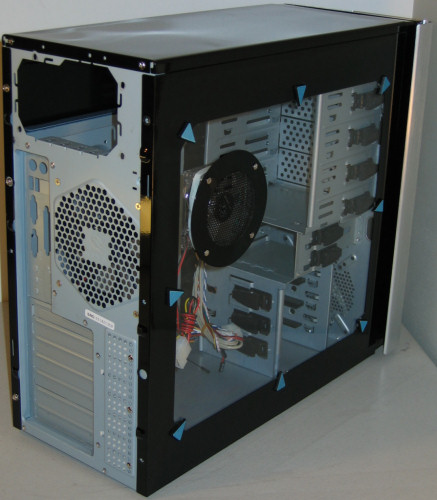
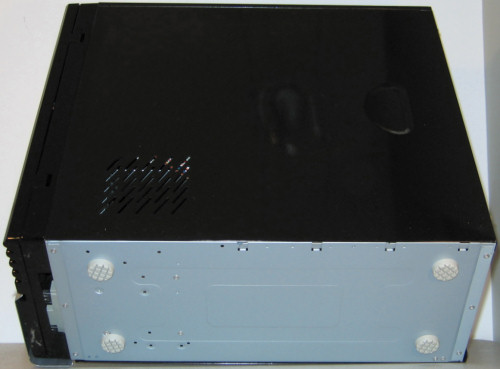
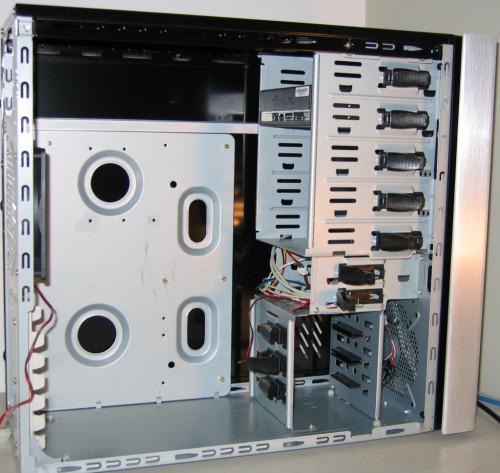
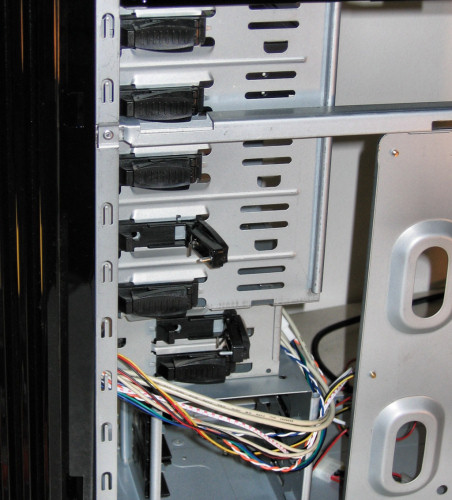








69 Comments
View All Comments
Tamale - Friday, January 13, 2006 - link
Thanks for the quick criticism guys. Article updated.Please continue to scrutinize :)
Viditor - Friday, January 13, 2006 - link
Another comment for your conclusion (which is important for those of us that do video work)...the P150 is the only one of the 3 that has Firewire connector in front (as far as I can tell). If you could list the specs of each case at the head of that cases segment, that would also help (e.g. number of 3.5 slots, front firewire connector, etc...).Cheers!
ceefka - Saturday, January 14, 2006 - link
The P150 also features a cable organizer. If you take of the right panel, you'll see it at the right side of the internal 3,5" drive bays. This can make your cabling a lot tidier than the picture in the review shows.The FireWire connection is S400 on an Intel standard. Those who wish to connect AMD boards might want to call Antec for an adapter cable.
All'n'all I think the P150 looks like a fridge. I bought it though because it made the most sense for its price.
Tamale - Saturday, January 14, 2006 - link
I've heard the P180 referred to as a fridge much moreso than the P150.. hehebut yah, good catch on the cable organizer.
andrewln - Friday, January 13, 2006 - link
i wonder if they suspended the hard drive or they used the brackets.... it makes a difference when the hard drive seeksyacoub - Friday, January 13, 2006 - link
For that matter I wonder if they had the 3-speed 120mm fan it comes with on the lowest setting for the sound tests or still ramped up to max from the cooling tests.gman003 - Friday, January 13, 2006 - link
Why only 3 cases in the roundup? Not much to compare to... :-(In any case, I would really love to see an Aspire case tested against these sometime. I've been building with them for a while now and IMO they look better and cool better than Antec or other so called "Gaming" cases.
Raidmax and Antec cases are nice, but Raidmax is too chinsy with their materials at times and Antec is sooooo overpriced sometimes that one really shouldn't even consider them anymore as their go to case because of so many other competing vendors out there with high quality cases at cheaper prices.
mindless1 - Friday, January 13, 2006 - link
True, Antec is often overpriced but (putting aside the possible issues with the power supply), it's expected that with the Antec one has a power supply they can use long-term. Raidmax power supplies I wouldn't even install in most systems. What would be most interesting is a P150 discounted due to no power supply until the issues with the present one are resolved.oofboi754 - Thursday, March 31, 2022 - link
This case isn't so bad. Put in some Noctua Fans in the front and back ant it keeps my 3060ti (EVGA XC) and 12700kf (NH-U12S) at a comfortable 40 Degrees Celcius when idling. The Noctua Fans combines with the quiet nature of this case keep my rig silent as possible. For it's age, the cable managment isn't bad, it just takes a bit of creative thinking. This case is great for a Sleeper PC like I made.